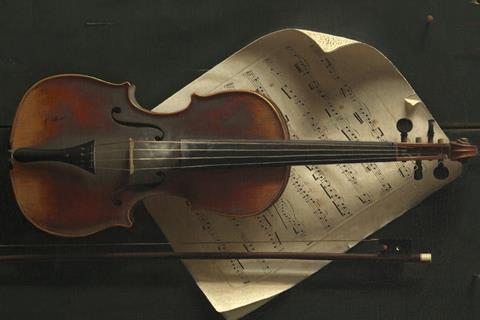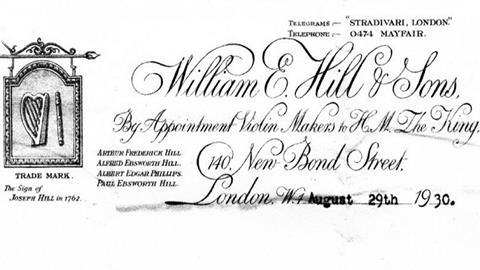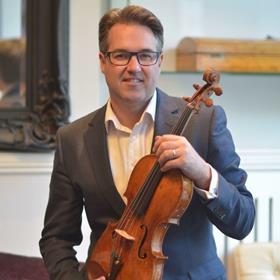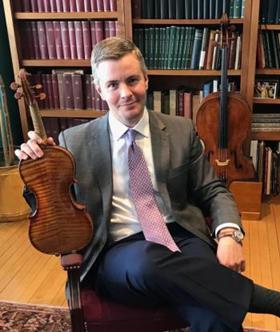A reader has inherited an old Italian violin, in this case a Landolfi. In fact, finding a violin in a grandparent’s attic is some people’s first introduction to the stringed-instrument world. What’s the next step regarding authentication?

THE DILEMMA: I have recently inherited what seems to be a 1772 violin by the Milanese maker Carlo Ferdinando Landolfi (1710–87). It appears to be in excellent condition, and has been stored safely in an airtight case for many years. I would like to get an insurance certificate, but I understand that some instrument dealers are more respected than others when it comes to authentication. How do I go about making sure I receive an authoritative appraisal and a genuine certificate of authenticity?
RICHARD WARD
Hardly a day goes by at our shop when we are not visited by customers wanting to know about an old violin that has been in their family for decades. The violin can be in various states of disrepair, but normally there is no documented history on them, only a family oral tradition. Almost always, the instrument will have a label with the name of some well-known classical maker, which of course causes excitement in the owner. There are probably millions of these instruments out there, hiding under beds, in closets or basements. Most of them are 100-year-old cheap student instruments from Saxony or Bohemia, but sometimes better, more interesting instruments do appear.
The first step is to establish what your violin really is. I would take it to a large established violin shop in your area. If the violin is clearly not a Landolfi and simply an old violin with a reproduction label, an experienced shop should be able to tell you that. Most good shops will do a verbal assessment. Some charge for this, some don't. If they can’t say for sure, they might be able to send you to someone who can.
You can then ask for a simple insurance appraisal. However, many old instruments are not so easy to identify. If in fact you have something of interest, there are a number of highly qualified experts around the country usually in the large metropolitan areas and a dealer in your area should be able to give you some names. If you can find an expert who will agree to help you, expect to take the violin to them, and expect to pay handsomely for the service.

There are also auction houses that specialise in stringed instruments, whose experts often travel around the country looking for instruments and bows for their sales and they may come to your area. If you show them your violin and they give you their opinion, you are not obliged to consign the instrument to them. If there is a bow with the violin, have that examined as well. Once in a while, it can be of some value on its own.
You spoke of two different documents. An insurance appraisal is simply a statement in writing of the appraiser's opinion of the instrument’s market value at that time but does not give the expert’s opinion as to the instrument. A certificate of authenticity gives the expert’s opinion as to the maker of the instrument, but not the value. Keep in mind that these documents become legal documents, and could possibly need to be defended in court.
Because of this, many shops are backing off on even doing appraisals. Most shops will only write certificates of authenticity on instruments and bows that they sell. I think the level of expertise amongst top string instrument specialists is higher than ever before, but those experts feel they need to very cautious in making their judgements.
Richard Ward has been senior sales representative at Ifshin Violins in El Cerrito, California for over 25 years
SEAN BISHOP

The first thing to think about is the reason you need a certificate. You mentioned that you are looking for a certificate for insurance purposes; however, perhaps all you need is an insurance valuation. Most violin shops offer this at a nominal rate and hopefully they will be competent enough to be able to do this. But if you really do want to dig deeper, then an actual certificate of authenticity would be the next step.
Remember, any opinion that is given towards the violin is just that: an opinion. In fact, certificates nearly always state: ‘In our opinion.’ Every day, violin dealers see instruments that have old certificates that we might not agree with, but which was the judgement of the ‘expert’ at that time.
Now that you have spoken to your local violin maker or violin shop about insurance, they should also be able to point you in the right direction for whose certificate might be best. Landolfi is a famous maker and his instruments can go for hundreds of thousands of dollars, so it's best to try and get it right!
One other option is to take photos of the violin – the full-length front and back, plus one side of the scroll (an iPhone camera or similar would be fine) and then email them to major violin shops around the world. A simple Google search, or a glance through The Strad Directory, should pinpoint a few shops that look like they are serious, and most dealers should be happy to give an email response to this question – in fact, if it looks like a fine Italian violin, they will be contacting you very quickly!
To be fair, in most situations like the one you describe, the violin in question turns out not to be one by the maker labelled. The violin might still sound great, but possibly have a value in the hundreds, or the low thousands. Good luck with the interesting task ahead.
Sean Bishop is a London-based instrument dealer and owner of Bishop Instruments & Bows
JOSEPH BEIN

This is a question we receive from instrument owners quite frequently. The first question we ask them is how much more they themselves know about the instrument: for example, how it came into their family’s possession. Are there any documents that exist with the violin? It helps us to create a history for an instrument that is completely new to us.
It would be nice to find out, for instance, if the violin has ever been in the hands of one of the well-known firms of history – particularly one that existed at the time your grandparents were alive. That wouldn’t guarantee authenticity in itself, of course, but it could increase the likelihood of it being genuine.
Our firm will charge five per cent of the instrument’s perceived value for a certificate of authenticity, which includes an insurance appraisal. Once we have it with us, we’ll compare it with other examples by the same maker that we know to be genuine – the ones we have in our own inventory, and the instrument photos in our archive. The process might take some time, although if we decide it’s not genuine, the conclusion will often be much faster.
Keep in mind what my father, Robert Bein, used to say: ‘If your grandparents had a Stradivari in the attic, everyone in the family would know about it!’ It’s rare for the works of the great Italian makers just to appear in the 21st century, without any provenance – and increasingly so as you go higher up the echelon of great and respected makers.
One thing you might like to look at is the varnish: a 1770s Landolfi will usually have yellowish varnish, whereas those from the 1750s will have more red.
Joseph Bein is sales executive, principal historian and archivist for Bein & Fushi in Chicago
This article was first published in the December 2016 issue of The Strad











































No comments yet